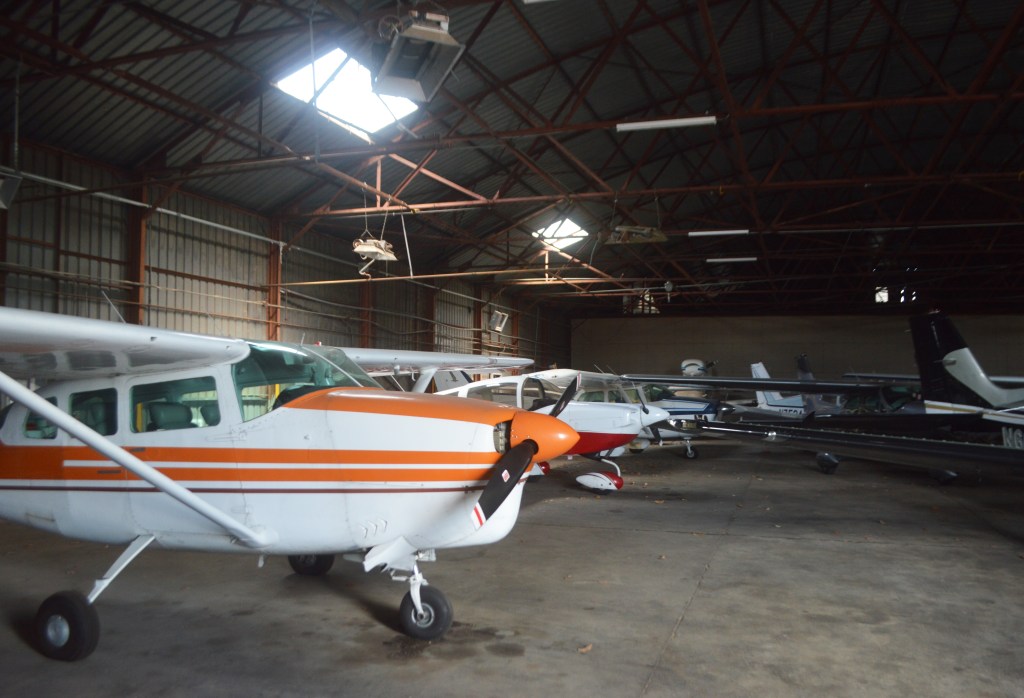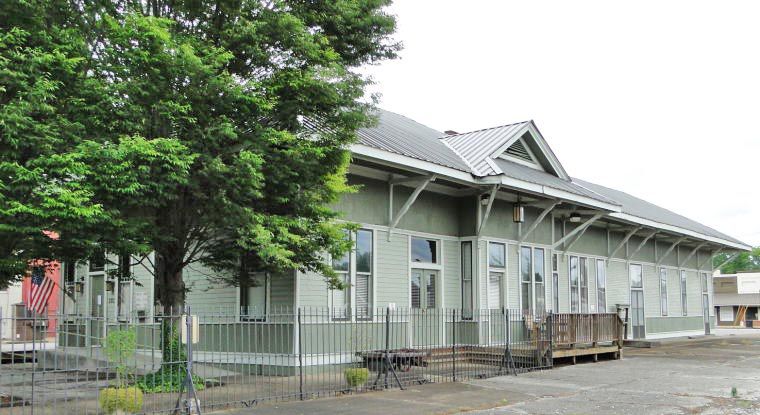Pryor Field renovations to include removal of WWII beacon tower
Published 7:00 am Thursday, June 11, 2020

- Aircraft rest Wednesday in a hangar built in the 1940s as part of a training facility for World War II pilots at what is now Pryor Field Regional Airport. The airport authority board recently voted 3-2 to renovate the hangar and preserve its historical significance.
A portion of Pryor Field Regional Airport that was once used to help train World War II pilots will be removed as part of ongoing renovation at the airport.
The airport authority board voted 3-2 Tuesday to renovate one of the original training hangars from the 1940s, including re-sheeting the hangar and removing rust and lead-based paint, according to airport manager Adam Foutz. Foutz said unfortunately, a building attached to the hangar was deemed too expensive to renovate, so it will be removed.
That building includes the beacon tower from Pryor Field’s days as the Southeast Air Forces Training Center. Its part of what led Pryor Field to being designated to the Alabama Register of Landmarks and Heritage in 2010.
A historical marker in front of the building describing the history behind Pryor Field’s name — Schuyler Harris Pryor, a flight instructor who died during the war — and its construction will be moved closer to the airport’s entrance on U.S. 31.
“The airport is the historic site,” Foutz said, but he later noted the historic importance of the hangars, adding, “We’re going to renovate and preserve them and preserve our history the best we can while accommodating growth and capacity needs.”
Currently, Foutz said, there are about 60 hangars total, housing 113 aircraft. There’s a list of about 40 aircraft waiting for a spot at Pryor Field.
He said not only do they need to renovate the existing hangars, removing the structure next to it will allow for future development and new hangars. Other renovation projects at Pryor Field include work on the runway, taxiway and aprons.
Judith Burleson, who manages Learjetjohn Aviation, a flight school at Pryor Field, said even though she agreed the vote on the beacon tower was fair and legal, she’s sad to see the building go.
Those veterans “were the greatest generation of our nation’s history,” she told The News Courier. “They gave their lives; they trained here. A thousand pilots a year were trained here out of this building.”
She said it’s more than a run-down building at an airport — it’s a monument to World War II veterans that’s been neglected and allowed to fall into disrepair.
“It’s sad to see that we’re losing a monument to the greatest generation,” Burleson said. “We’re still going to honor the pilots who were trained here in some kind of way, but we won’t have the building.”





